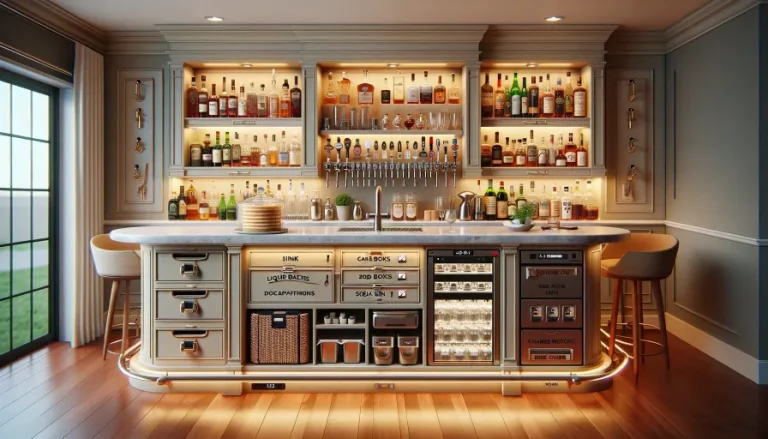
8 Stylish Home Bar Design Ideas to Elevate Your Interiors
Dreaming of your very own escape room or man cave in the form of a home bar? You’re not alone. Many homeowners crave a dedicated space to kick back, let loose, and entertain—without the cost and hassle of going out. A home bar gives you just that: a private haven for fun, laughter, and good times right at home.
But before you start pouring drinks and toasting to your new setup, there are a few essentials you need to get right. A thoughtful bar design for home goes beyond aesthetics—your bar will deal with spills, glassware, and heavy-duty use. Skipping proper planning can lead to costly repairs down the line. From smart layout decisions to structural must-haves, we’ve laid out 18 practical ideas to make sure your home bar is not just stylish, but also durable and functional for years to come.
When designing your home bar, you’ll typically choose from three main types:
-
Built-in Bar: A full setup with a counter, shelving, and a seating area—perfect for creating a lounge-like experience.
-
Walk-up Bar: Usually placed in a butler’s pantry, this compact option skips seating and often lacks plumbing, but serves as a great grab-and-go setup.
-
Furniture Bar: Think bar carts, cabinets, or stand-alone shelving units—ideal if you want a flexible, non-permanent option.
Before diving into design inspo on Pinterest, ask yourself these key questions:
-
How much space can you dedicate?
-
Do you have a vision or are you starting fresh?
-
Are you building from scratch or remodeling?
-
What’s your budget?
-
What’s your style?
Home Bar Design Ideas You Shouldn’t Miss
Home bar counter design is such a fun opportunity—there aren’t too many rules, which means you can really make a bold impact. It’s a space where creativity shines, especially since you're only spending a couple of hours there at a time. So, have fun with it!
Whether you’re going for timeless class or playful modernity, these ideas can elevate your space and make it unforgettable.
1. Maximize the Seating Area
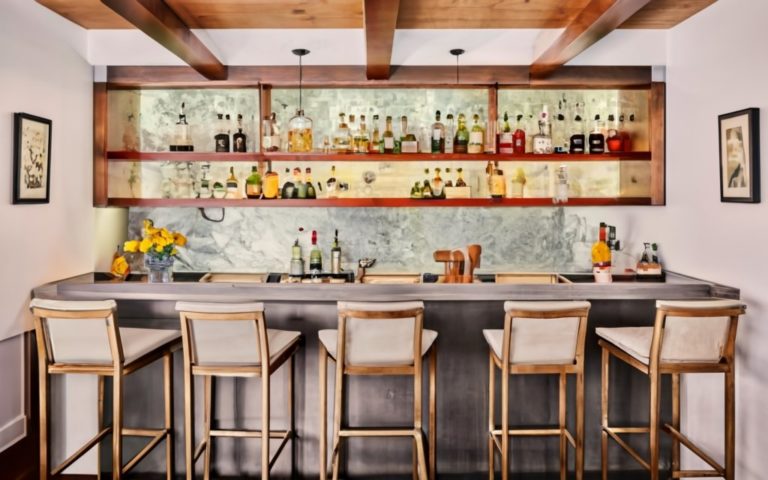
Ditch the bulky U-shaped bar and go for a straight, wall-hugging design. According to hospitality expert Chris Schneider, this layout offers more seating, encourages socializing, and gives your bar a clean, contemporary look.
Pro Tip: Swivel stools make mingling even easier!
2. Choose Comfortable Bar Stools
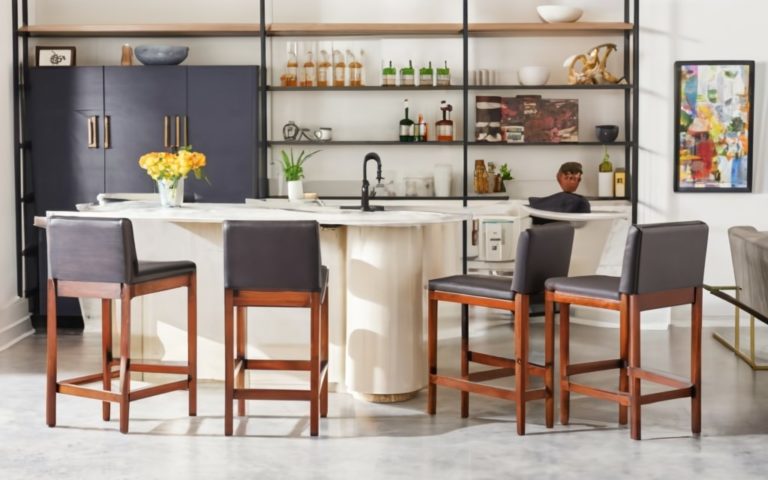
In any modern bar design, investing in stools with proper back support is key—comfortable seating encourages guests to stay longer, relax, and truly enjoy the experience
3. Opt for Water-Resistant Flooring

Spills are inevitable—plan for them. Instead of moisture-sensitive wood, choose durable options like tile or sealed concrete. If you want bonus functionality, install floor or gap drains to make cleanup a breeze.
4. Use Water-Absorbent Bar Mats
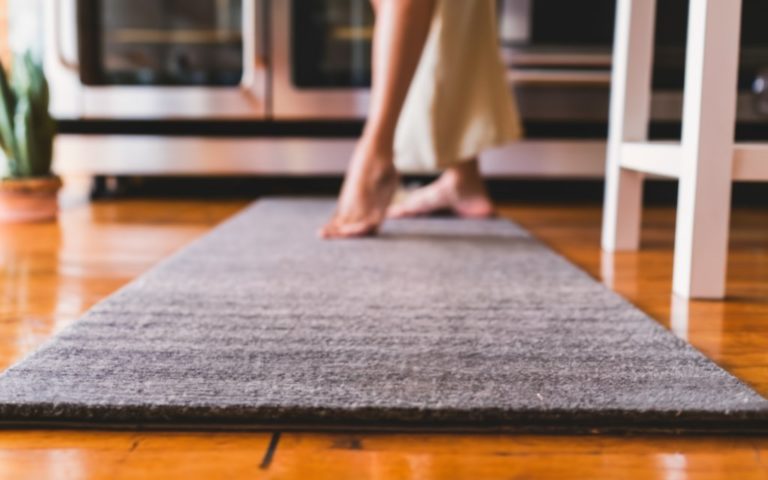
Forget rugs—bar mats are easier to clean, replace, and manage during spills. Choose cushioned mats with slight elevation so moisture doesn’t seep into your shoes while you tidy up.
5. Add a Statement Piece of Artwork
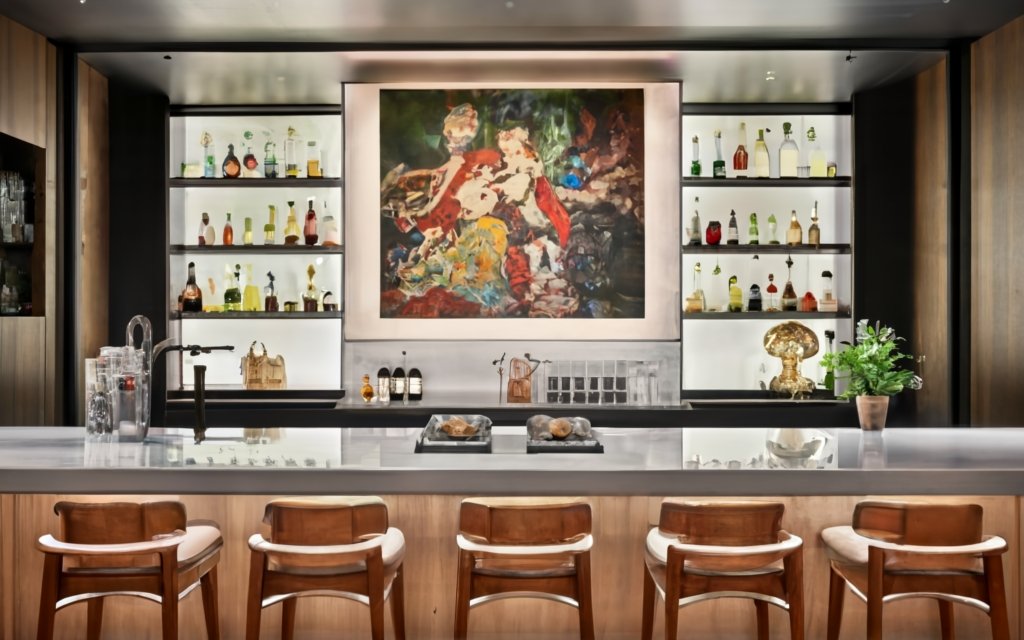
An eye-catching art piece or DIY project can be a great conversation starter and a stylish way to reflect your personality. The home bar is the perfect place to showcase it.
6. Build a Durable, Moisture-Resistant Bar Base

Don’t let dampness ruin your fun. Avoid using wood as your primary frame material—it’s vulnerable to rot over time. Instead, go with strong materials like cinder blocks, stone, or brick. These can last for decades and stand up to spills with ease.
Style Bonus: You can always finish the base with a faux wood or brick veneer for a more polished look.
7. Select the Right Bar Top Material
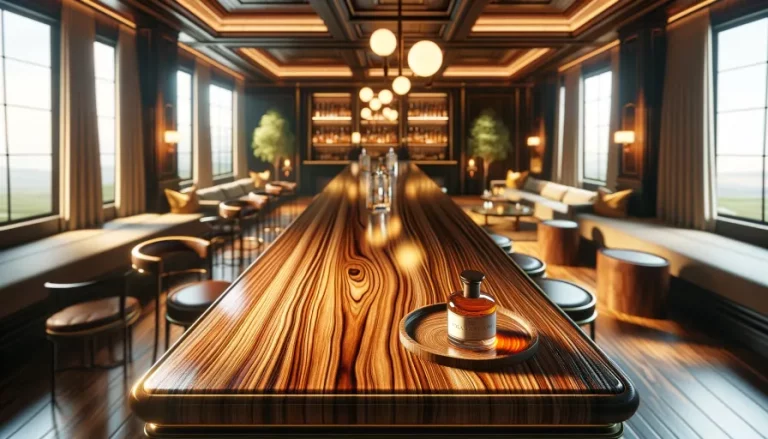
From wood to metal, and concrete to stone—bar tops come in all kinds of materials. Just make sure it fits your style and climate. Here’s a quick breakdown:
| Material | Considerations |
|---|---|
| Wood | Needs a durable seal like epoxy or varnish |
| Metal | Sleek, but requires sealing to prevent tarnishing |
| Concrete | Perfect for modern spaces, may not suit every aesthetic |
| Stone | Luxurious, but prone to chipping over time |
Also, choose cleaning products that are safe for your chosen surface to avoid chemical damage.
8. Make Use of the Front Bar Underside

The front-facing section of your bar can house a lot more than meets the eye—sinks, soda guns, ice buckets, liquor rails, and more. Just make sure you have enough depth and bar top overhang to conceal and support these elements.
Pro Tips:
-
Add hooks for purses or bags under the bar.
-
Include USB and power outlets so guests can recharge their devices.
-
Use under-cabinet and backsplash lighting to highlight your liquor display.
These design ideas will help you create a home bar that’s not only visually stunning but also functional, long-lasting, and perfect for making memories. Whether you’re hosting a laid-back evening or a full-blown party, your bar will be ready to handle it all in style.
Final Thoughts
designing your dream home bar isn’t just about picking out the right decor or having a few bottles of your favorite spirits on display. It’s about creating a space that blends style, function, and durability—where friends and family can unwind, make memories, and have fun without worrying about costly repairs or upkeep. By following these 8 essential tips, from choosing the right seating and materials to ensuring proper moisture resistance, you’ll be setting yourself up for a home bar that lasts for years to come, and remains the go-to spot for unforgettable nights in.
Also, check out 7 Bedroom Mirror Design Ideas
FAQs on Hom Bar Design Ideas
What are the current trends in home bars?
One of the standout trends in home bar design is the shift toward inclusivity for non-drinkers. “Homeowners are expanding their bar offerings to go beyond the usual beer, wine, and spirits,” explains Goesling. “We’re seeing more setups include sparkling water, coffee, non-alcoholic drinks, and curated mocktails. This shift has transformed how these spaces are used throughout the day, driving demand for flexible storage, dedicated chilling systems, and multi-functional accessories.”
Another major trend is the rise of stealthy, space-conscious bar designs, especially as home bars move out of basements and into main living areas. Goldbach notes, “Today’s home bars are often designed to disappear when not in use. Features like pocket doors, sliding panels, and concealed cabinetry are becoming more common, allowing bars to integrate seamlessly into the home’s decor.”
Are wet bars in style?
Once a hallmark of upscale homes in the 1970s, the wet bar is enjoying a revival. “If space allows, a wet bar is definitely worth considering,” says Renee DiSanto of Park & Oak in Glen Ellyn, Illinois. “Having a sink and running water adds major convenience for both preparation and cleanup.” For smaller or more casual needs, a dry bar—essentially a wet bar without the sink—remains a practical option, especially when serving wine or beer rather than mixing cocktails.
Are bar carts still trendy?
Bar carts continue to be a popular design feature, although their role has evolved. “They’re now appreciated as charming and functional additions for compact spaces or homes where a full bar setup isn’t practical,” says D’Agostino. If mobility isn’t essential, other small-scale alternatives like bar cabinets or repurposed console tables can offer a similar aesthetic and function.